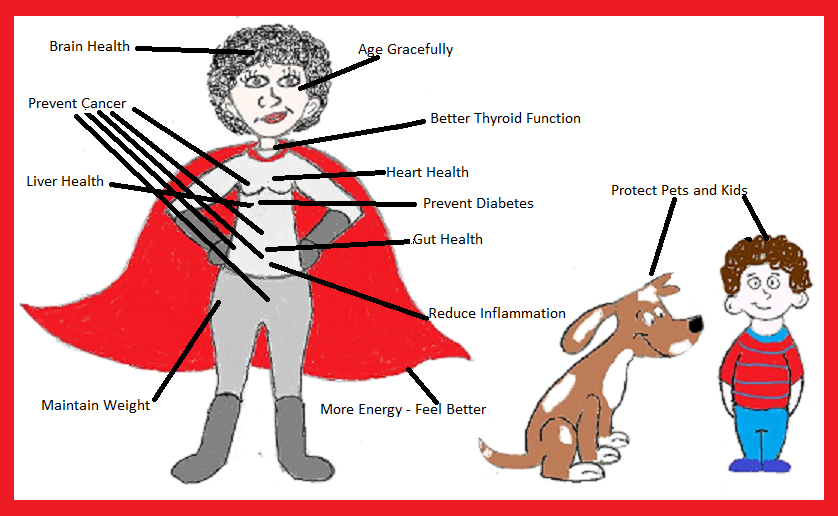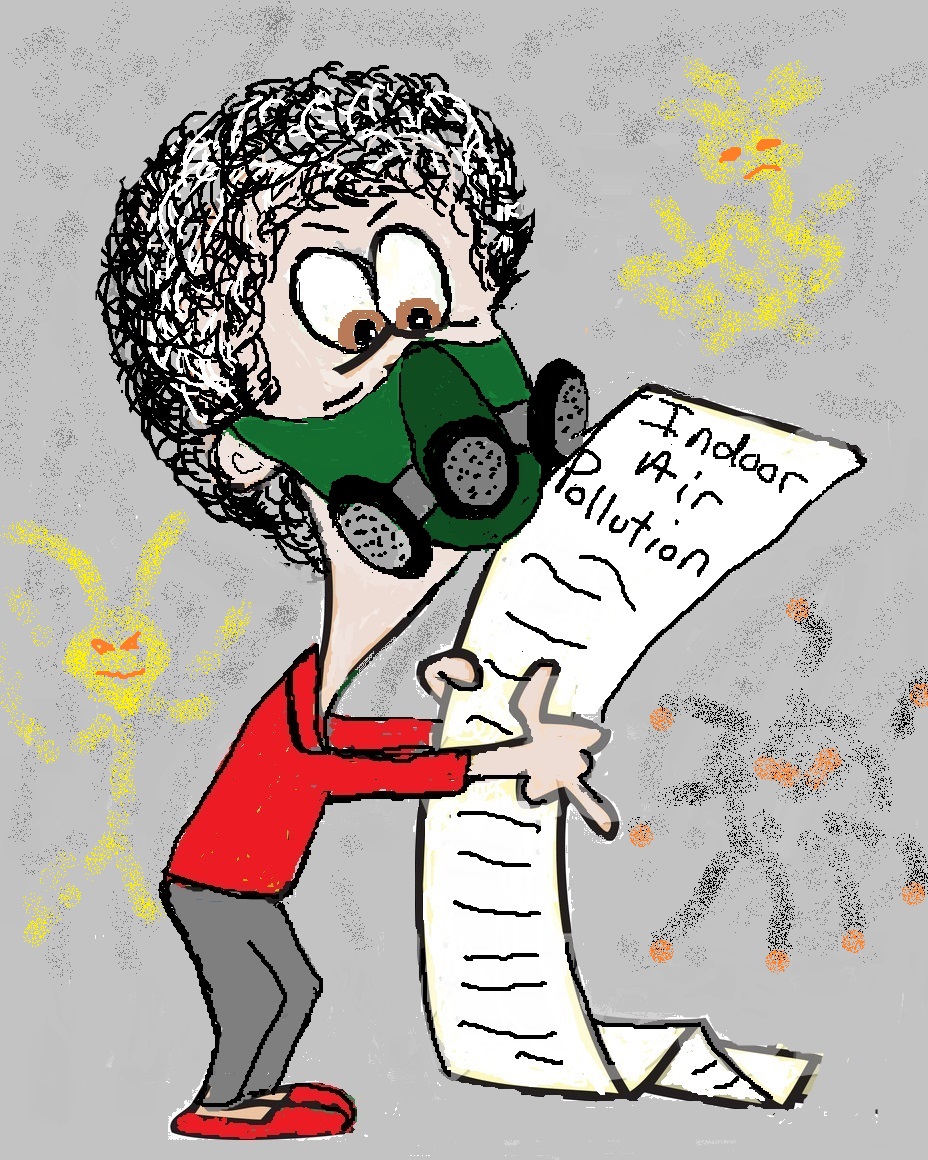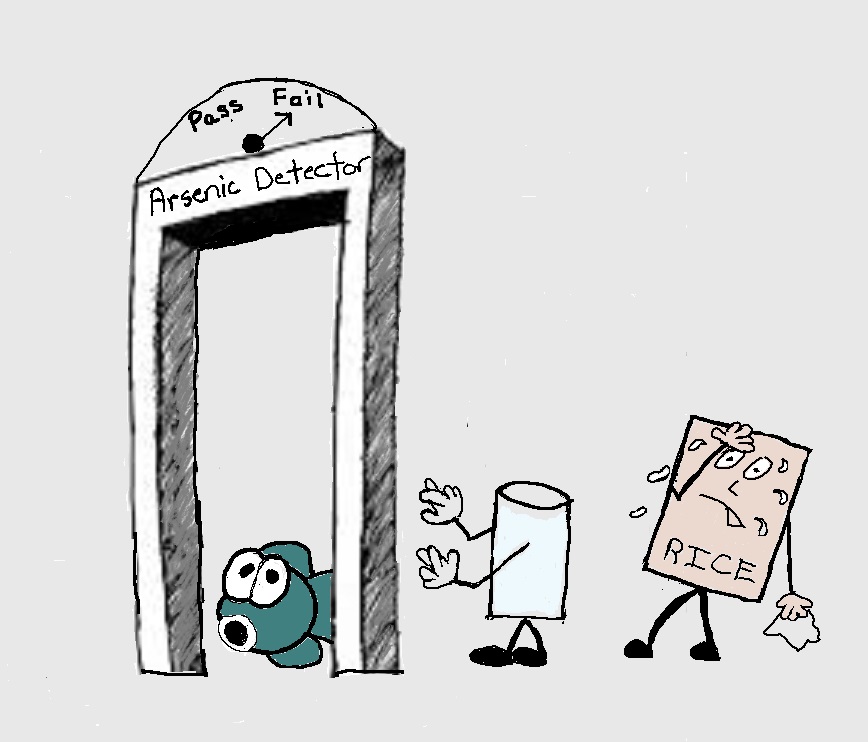- Home
- Toxic Chemicals & Health
- Fatty Liver
The Secret Cause Of A Fatty Liver
About 30% of you have a fatty liver. Well known reasons for this health epidemic are alcoholism and obesity/metabolic syndrome. But there's another, secret cause.
And it's puzzling that the secret cause is a secret. Because researchers have known about it since at least 2010. They even gave it a name.
But do a Google, Bing or Yahoo search and you won't find it mentioned. Until now.
Functions of Your Liver
Your liver serves many vital functions in your body. It produces blood proteins and metabolizes lipids and sugar. And it’s your body’s detox machine.
Your liver has the extremely important job of breaking down toxic chemicals into forms that can be eliminated from your body in urine, feces and sweat. And many of the toxic chemicals your liver deals with leave a lasting impression.
Because blood from the stomach and intestines flows through the liver before entering the rest of your body it is the first organ to encounter ingested nutrients, vitamins, metals, drugs, and environmental toxicants.
In other words, your liver is the first line of defense against toxic chemicals. But, that also means it’s the target organ most often affected by toxic chemicals and environmental pollutants.
In fact, all the major functions of the liver can be damaged by acute or chronic exposure to toxic chemicals. And, it now appears that a fatty liver may be the most common response to that chemical exposure.
The Fatty Liver Secret
That’s right. The secrets out. Toxic chemical exposure can
make your liver fat.
That’s a problem because excess liver fat damages your liver. And it can lead to liver inflammation, cirrhosis and liver cancer.
It is also associated with the recent rapid rise in diabetes, obesity, and metabolic syndrome. And a fatty liver impairs how well your liver breaks down toxic chemicals.
And it's a common problem. Because approximately 20–30% of the population in the United States carry extra fat in their livers, a condition called Nonalcoholic Fatty Liver Disease (NAFLD). NAFLD includes the initial fatty liver stage through the progression to liver cancer.
The most well-known causes for a fatty liver (steatosis) and liver inflammation (steatohepatitis) are alcohol (alcoholic steatohepatitis, ASH) and obesity/ metabolic syndrome (nonalcoholic steatohepatitis, NASH).
But a recent study estimated that exposure to about one-third of all industrial chemicals can lead to fatty changes in the liver, causing a condition called Toxicant Associated Fatty Liver Disease (TAFLD). and its more severe form, Toxicant-Associated Steatohepatitis (TASH).
Pesticides like glyphosate, endocrine disruptors like BPA, and arsenic, can contribute to a fatty liver. And that’s just the tip of the ice burg.
The Toxic Chemicals Linked To Fatty Liver Disease
By 2015, animal studies had identified 123 chemicals associated with a fatty liver. About 44% of the chemicals were pesticides. Fungicides and herbicides were more often linked with fatty liver than insecticides.
They include agricultural pesticides like atrazine, cyproconazole, dazomet and glyphosate (in Roundup). These chemicals end up in your drinking water and nonorganic food. And in your yard if you use Roundup to kill weeds.
After pesticides, solvents were the class with the second highest number of chemicals associated with making your liver fat. Two common solvents linked to it are toluene and methyl isobutyl ketone. Both are used to make paints, varnishes, lacquers and resins.
And both toxic chemicals are emitted from indoor air fresheners. Toluene is also found in fingernail polish.
Additional chemicals linked to fatty liver disease are:
- Air Pollution
- Arsenic – from food and drinking water
- BPA – found in canned foods and plastic food and water containers.
- Brominated Flame Retardants - BMP (2,2-Bis(bromomethyl)-1,3-propanediol) used in poly foam, polyester and TBBPA (Tetrabromobisphenol) used in furniture, electronics, plastic.
- Dibutyl phthalate – (DBP) used in personal care products, and other scented products (eg, candles, air fresheners, shampoos).
- Lead – found in food, water, old paint, toys.
- Mercury - main source of exposure is eating fish and shellfish.
- Persistant Organic Pollutants (POPS) – found in food and drinking water. From pesticides and industrial chemicals. POPs concentrate in the liver and body fat.
- Non Stick/Stain Resistant Chemicals – (PFOA, PFOS, PTFE) – found in cookware and textiles.
- Resorcinol - Most common in hair dyes, shampoos/hair lotions, peels and products used to treat acne and eczema.
- Sodium selenite – Form of selenium found in vitamins, pet food, nutrition shakes and infant formula.
- Water Disinfection Byproducts – produced when chlorine is used to clean public water supplies.
- Vinyl Chloride – used to make vinyl and styrene products, like vinyl flooring, plastic shower curtains and styrofoam containers.
The Double Whammy
The number of toxic chemicals that contribute to a fatty liver is quite scary. But what’s even worse is that many of the toxic chemicals listed above are also endocrine disruptors.
That means these chemicals are indirectly linked to increased liver fat because they directly contribute to diabetes, obesity and metabolic syndrome. which is the well-known cause of the disease.
The International Diabetes Federation estimates that 20–25% of the world’s adult population have metabolic syndrome, which it defines as: “a cluster of the most dangerous heart attack risk factors: diabetes and prediabetes, abdominal obesity, high cholesterol and high blood pressure”
These chemicals also disrupt endocrine signaling to cause a fatty liver. And they can change how your liver responds to obesity. Arsenic, PFCs, POPs and water disinfection byproducts also speed up the change from a fatty liver to an inflamed liver.
In other words, toxic chemicals can influence both the development and severity of NAFLD.
11 Ways To Keep Your Liver Slim
- Get a great water filter. Many of the toxic chemicals
linked to a fatty liver can be found in drinking water. Choose one that removes arsenic, atrazine, BPA, glyphosate, lead, mercury, and water disinfection by products.
Countertop options like Berkey and Aquagear will protect you from many fatty liver toxins. Water distillers and reverse osmosis systems will also keep your liver slim. - Reduce your exposure to pesticides like atrazine,
fungicides and glyphosate by switching to organic produce and using natural
pesticides. Instead of synthetic fungicides in your garden use a Neem Oil
fungicide or Garden Safe fungicide.
Instead of glyphosate try natural weed control methods.
- Cut waaay back on white and brown rice and rice products to
reduce arsenic exposure. Instead, add more low arsenic grains like farro, barley, amaranth and quinoa.
- Cut waaay back on eating fish with high levels of mercury like king mackerel,
marlin, orange roughy, shark, swordfish, tilefish, ahi tuna,
and big eye tuna. Canned tuna is the most common source of mercury exposure in the
country. stick to light or skipjack tuna, and limit it to less than two
servings a week.
- Go plastic and can free to reduce your exposure to BPA, Dibutyl
phthalate and vinyl chloride.
- Go fragrance free to clean up your indoor air pollution and
reduce phthalate exposure.
- Avoid nonstick cookware and stain and water repellent treatments
on clothes, rugs, and furniture.
- Reduce the animal fat in your diet. POPs like PCBs and DDT
hang out in the fat of the animals you eat. Their POPs become your POPs.
- For
upholstery, curtains and children’s items check the labels for any mention of
“treated with flame retardants” or a TB 117 label (“this article meets
flammability requirements”). Choose naturally flame resistant fabrics and fill like wool, cotton or jute.
- Avoid supplements with Sodium selenite.
- Consider following a Mediterranean Diet, but without the fatty fish. A number of research studies done in recent years have reported that a MedDiet can prevent and manage NAFLD.








